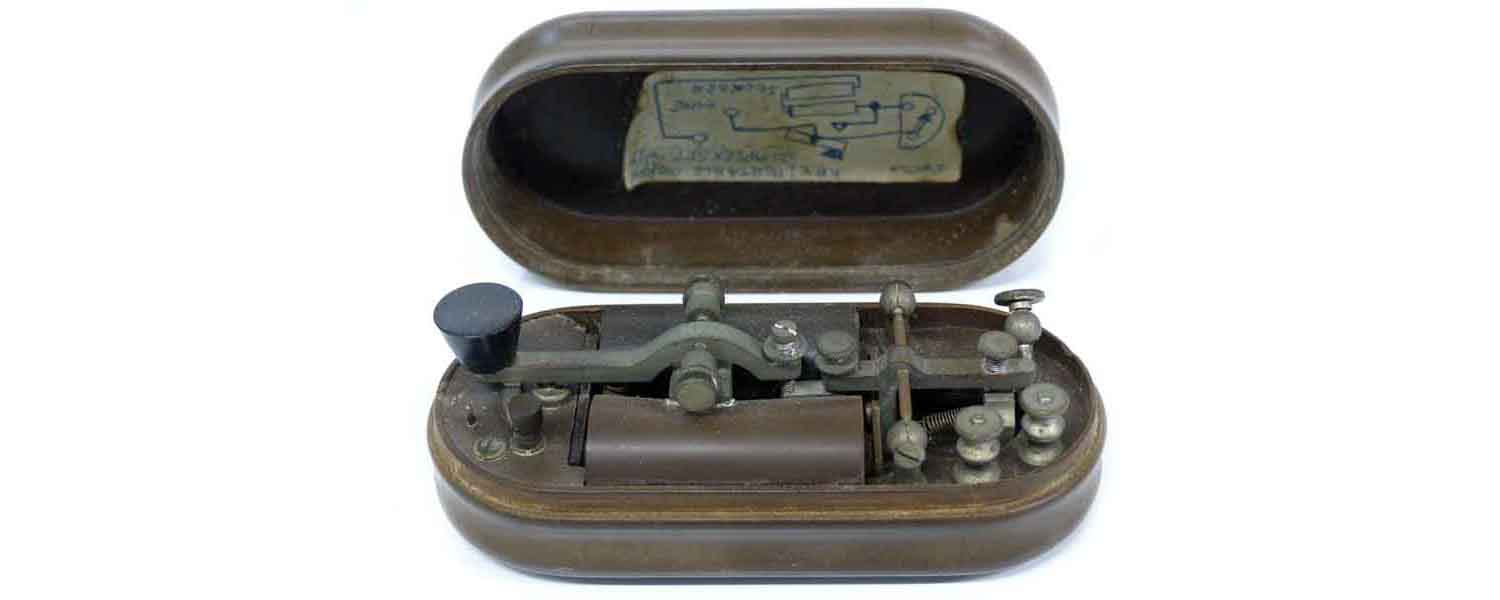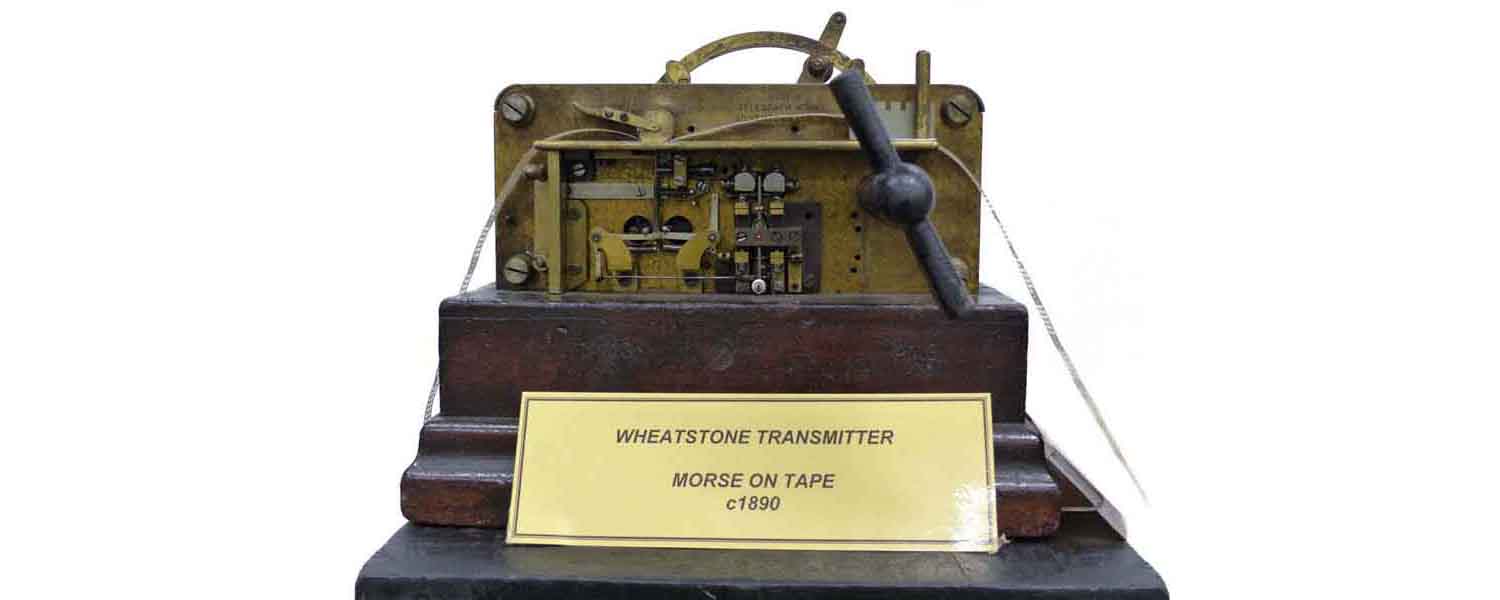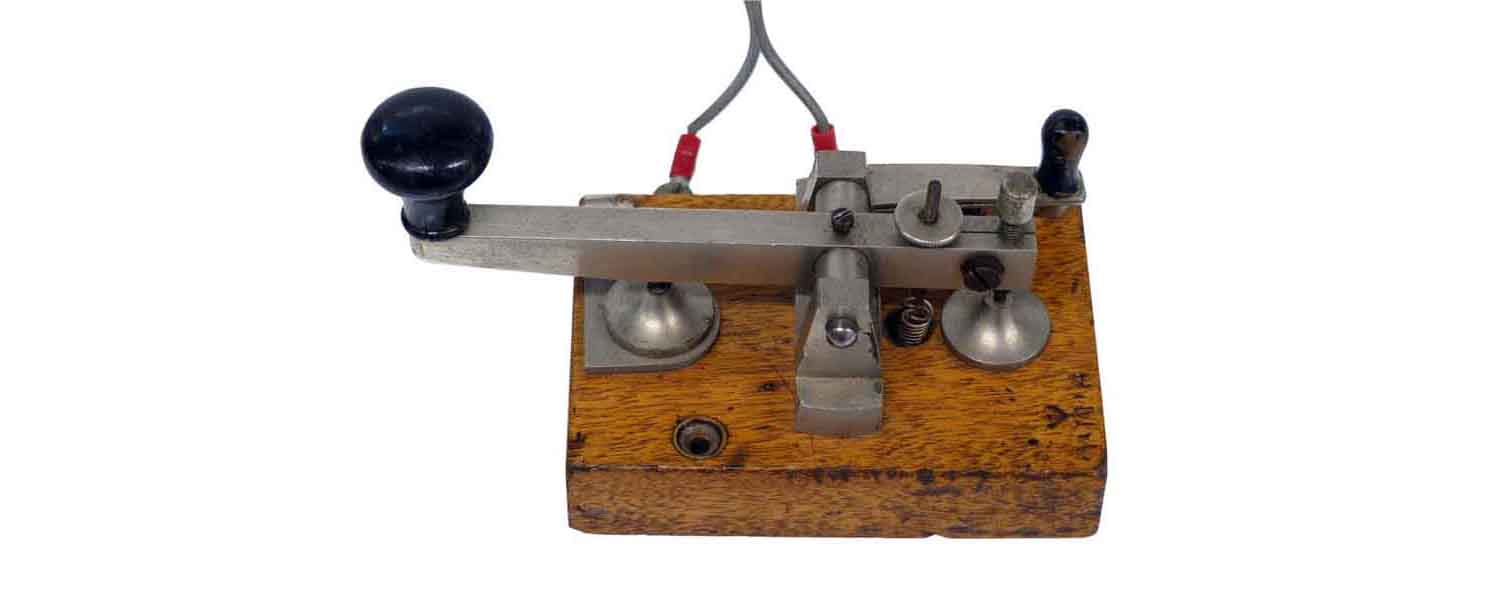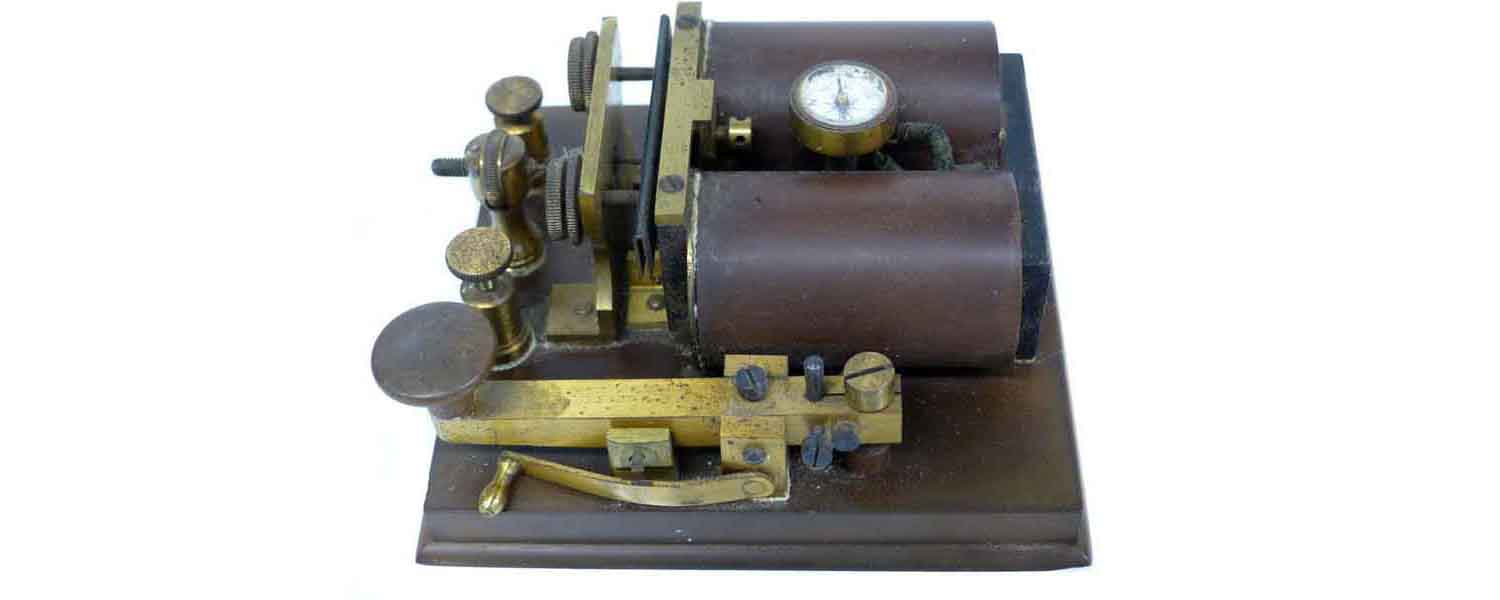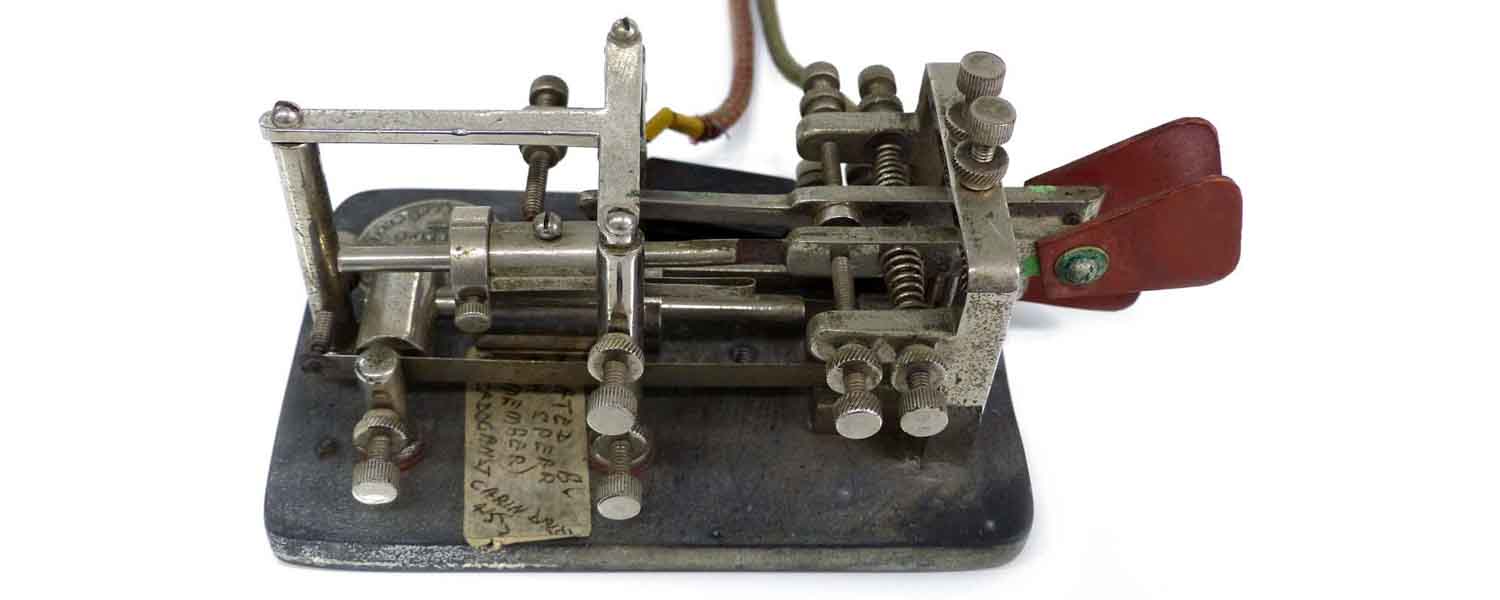Holiday Hours
The Museum is open on Wednesdays and most Saturdays unless there are special events (Christmas, Easter, elections). It is always best to check by calling 1800 Museum (1800 687 386) or by making an online booking, after which you will be contacted.
The Morse Electric Telegraph was developed just after David Alters invention in 1836. His device was further developed and patented by Samuel Morse in 1837. Many inventors were actively developing various electric telegraph systems during this period
See Wikipedia Page For More Information.. Samuel Morse's electrical telegraph system was capable of transmitting messages over wire. However, it was Joseph Henry who invented powerful electro-magnets for use with Morse's system to enable transmissions to exceed a distance of 40 miles. Morse's device was first successfully tested on Jan 6th 1838. His first telegram using his device was sent by himself on May 24 1844. The message read 'What hath God wrought?'
The first telegraphs came in the form of optical telegraphs including the use of smoke signals and beacons which have existed since ancient times. A semaphore network invented by Claude Chappe operated in France from 1792-1846. The last (Swedish) commercial semaphore link ceased operation in 1880.
Semaphores were able to convey information more precisely than smoke signals and beacons and consumed no fuel. Messages could be sent at much greater speed than horse riders. However, like beacons and smoke signals, they were dependent on good weather to work. They required operators and towers every 30 km (20 mi), and could only complete about two words per minute. This was useful to governments, but too expensive for most commercial uses other than commodity price information. Electric Telegraphs were to reduce the cost of sending a message thirty times less expensive when compared to semaphore.
AUSTRALIAN STATISTICS FOR YEAR ENDING 1891
| Messages handled | 1,189,355 |
| Revenue | £93,222 |
| Electric Telegraph Offices | 352 |
| Miles of Telegraph Lines | 9,973 |
| Miles of Wire | 17,622 |
Costs
Brisbane to Sydney 6/- (60c) for 1st 10 words + 4d (3c) per extra word
Brisbane to Melbourne 9/- (90c) for 1st 10 words + 6d (5c) per extra word
Brisbane to Sth Australia 12/- ($1:20) for 1st ten words + 8d (7c) per extra word.
Morse Tape Printer
Printed the message in dots and dashes on a narrow paper tape roll (12mm)
Morse Key
A typical telegraph morse key circa 1940 used extensively in telegraph office through out Australia. Amateur radio operators still use these keys today.
Made in England
Miniature Portable Key
This miniature portable key was easily carried in a pocket. These were used by telegraph linesmen to test lines back to the telegraph station. Circa 1850.
Miniature Portable Key
A linesman miniature key transmitter and receiver, carried in this leather case on the belt and could be operated without removing the set from the pouch.
Morse Bug Key
A well preserved example of the wide range of semi automatic and automatic morse bug keys. This key uses a horizontal action which helped prevent 'RSI' and were considerably faster then the conventional hand key.
From this action was developed the modern "lambic key" which is extensively used by amateur radio users.
